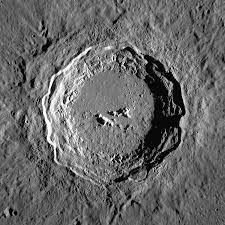Shiv Shakti Point’s Age
India’s Chandrayaan-3 mission marked milestone in lunar exploration. On August 23, 2023, India became the first nation to achieve a soft landing on the moon’s south pole. The mission’s landing site, known as Shiv Shakti point, is estimated to be around 3.7 billion years old. This age coincides with the emergence of primitive microbial life on Earth.
Mission Overview
- Chandrayaan-3 is India’s third lunar exploration mission, launched by the Indian Space Research Organisation (ISRO).
- The mission aimed to explore the moon’s surface, particularly the south pole region.
- The Vikram lander and the Pragyan rover were key components of this mission. They provided crucial data about the lunar surface and its geological history.
Age Estimation of the Landing Site
- Scientists from ISRO’s Physical Research Laboratory conducted a detailed analysis of the landing site.
- They used high-resolution imaging techniques to study the crater and rock distribution.
- The age of the region was established by examining 25 craters, revealing an age of approximately 3.7 billion years.
- This was corroborated by studying additional craters in the vicinity.
Geological Features of the Landing Site
- The Shiv Shakti point is characterised by diverse terrain types.
Researchers identified three distinct terrain types – high-relief rugged terrain, high-relief smooth plains, and low-relief smooth plains. - The landing site itself is situated in the low-relief smooth plains, which were determined to be the oldest among the studied terrains.
Impact Crater Analysis
- The landing site is surrounded by several large impact craters – Manzinus, Boguslawsky, and Schomberger.
- Each crater has unique characteristics and ages.
- For instance, Manzinus is about 3.9 billion years old, while Boguslawsky is approximately 4 billion years old.
- These craters have influenced the geological features of the landing site through ejecta dispersal from past impacts.
Rock Distribution and Composition
- The Pragyan rover’s exploration revealed a diverse range of rock samples.
- Among the 5,764 rocks examined, 525 measured over 5 metres in length.
- Notably, the largest rocks were found near a fresh crater, indicating that this area had experienced less space weathering.
- This fresh crater, located 14 km south of the landing site, provides vital information about the geological processes at play.
Significance of Findings
The findings from Chandrayaan-3 contribute to our understanding of the moon’s evolution. The age of the landing site aligns with critical events in Earth’s history. The geological features observed may offer clues about the moon’s past conditions and the potential for life in similar environments.
Month: Current Affairs - February, 2025
Category: Science & Technology Current Affairs








